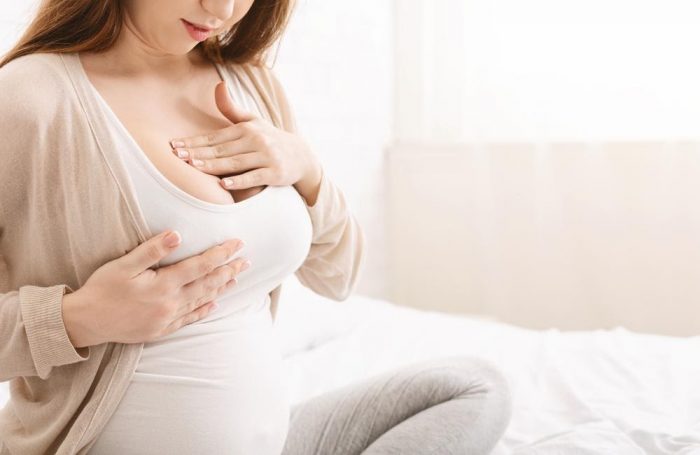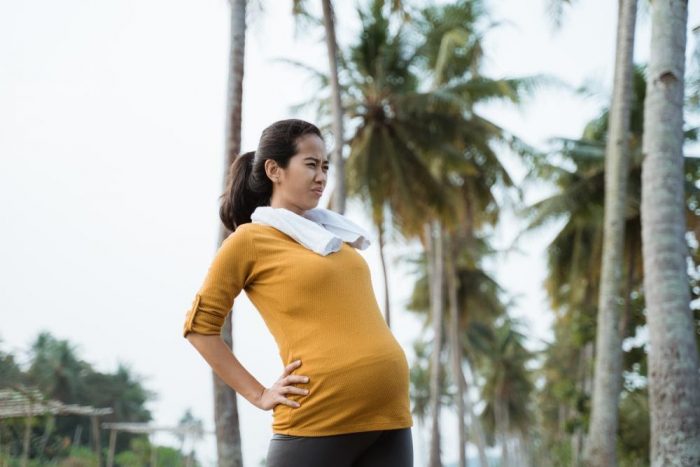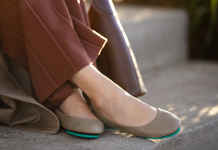Pregnancy is a major journey mentally, emotionally, and especially physically. Many women find themselves coping with permanent changes in their body – some positive and some not so great. Here are 11 potentially permanent changes you should look out for postpartum along with products that can help your body ease into these changes, such as Kegel balls and new bras.

1. Bigger Feet
Your feet, like many parts of your body, swell and grow during pregnancy. Many women find themselves having to temporarily go up a shoe size or even two. While most women’s feet go back to their normal size between six months and a year, not all of them go back to their pre-pregnancy state. Some of them have permanently larger feet for the rest of their lives.
2. Breast Size
Your breasts grow in size during pregnancy, and even more post-pregnancy as you begin to produce milk. Once you stop breastfeeding, your breasts may go back to their normal size, or even shrink smaller. However, some women do end up with permanently larger breasts even after their milk completely dries out. You probably won’t know whether your breasts will shrink, grow, or stay the same until it happens.
3. Nipple Size and Color
Breast size isn’t the only thing about your boobs that can change during pregnancy. It’s very common for your areolas to grow in size as your breasts get larger, and the nipples may also grow larger and more pronounced as well. Some women may also find that their areolas grow darker during pregnancy, and they may stay that way. (On a related note, some women find that their labia and even some of their moles also grow darker during pregnancy as well.) These skin changes often stay that way after pregnancy.
4. Vaginal Stretching or Tearing
Women who give birth vaginally often tear the perineum (the flesh between the vagina and the anus). Doctors may also cut this surgically to ease the baby’s passage. While the area will be stitched together after birth to heal, some women find that it’s never quite the same as before. Many women who give birth vaginally also find that their vagina becomes permanently wider even after their body heals. Doing pelvic floor exercises with Kegel balls can help tighten up the muscles down there. Talk to your doctor if you’d like to explore pelvic floor therapy.
5. Bladder Changes
All that stress on your pelvic floor can put a lot of pressure on the nerves and muscles that govern your bladder. Many women experience temporary urine leakage after giving birth and manage their symptoms with incontinence products for women. However, some women still find themselves struggling with incontinence months and even years after giving birth. Thankfully, there are many steps that can be taken to improve incontinence, including bladder training and medications.

6. Wider Hips or Rib Cage
Giving birth changes the structure of your pelvis, which may result in permanently wider hips for some women. And it’s not the only part of your body that grows wider. Some women find that their ribs widen as well, especially if they carry very large babies. Even after the pregnancy, you might find yourself choosing a wider bra band or a larger pant size to accommodate these changes.
7. Stomach Muscles
Morning sickness and heartburn aren’t the only stomach-related changes during pregnancy. A few women find that their stomachs expand so much that the vertical transverse muscles of their abdominal wall actually separate, a condition called diastasis recti. This leaves only a thin layer of connective tissue to contain your organs, which can lead to a pooch around your belly button. While this often heals up in the weeks or months after birth, in some women, it remains long after pregnancy.
8. Stretch Marks
Stretch marks are one of the hallmarks of pregnancy. These scar-like depressions in the skin are caused when your body grows very rapidly and stretches the skin too quickly. Stretch marks are most common on the stomach but may occur in other parts of the body as well. They often fade over time, but may still remain very prominent on some women even long after pregnancy.

9. Skin Changes
Your skin might also undergo other changes besides stretch marks, thanks to the variations in your hormone levels. Some women find that their acne clears up, while others begin to experience it for the first time in years. Others must deal with skin that is much drier or oilier than normal. Many pregnant women also get melasma (aka the mask of pregnancy) which results in larger dark brown spots on their face. These spots may clear up after birth or become permanent.
10. Hair Changes
Your hair on both your body and your head will likely change during pregnancy, and it may not go back to the way it was before. Some women find that their leg hair temporarily stops growing as fast or as long during pregnancy. Others develop random dark hairs in various places that remain after pregnancy. Many women also find that the texture and/or color of their head hair changes — for instance, their previously straight hair may become wavy or even curly.
11. Allergy Changes
Some women develop allergies and/or intolerances during pregnancy, becoming sensitive to things such as lactose, gluten, and pollen. On the flip side, other women who already have these allergies find them alleviated during pregnancy. These changes in sensitivities may be temporary and only last for the duration of the pregnancy, or they may last beyond giving birth.
Having a baby is a beautiful thing, but it also puts your body through a lot – whether you deliver vaginally or via C-section. If you’re expecting a baby, keep these 11 physical changes in mind as your belly begins to grow. They might be permanent!










